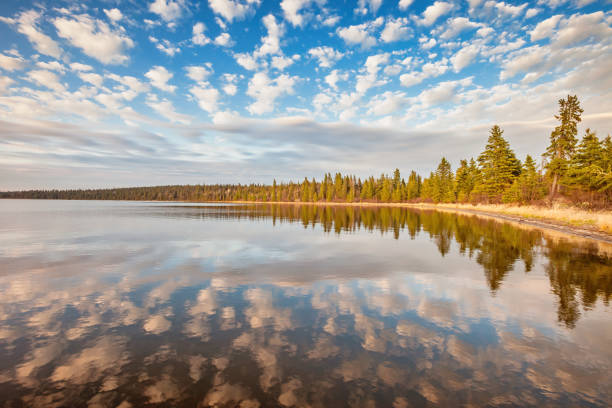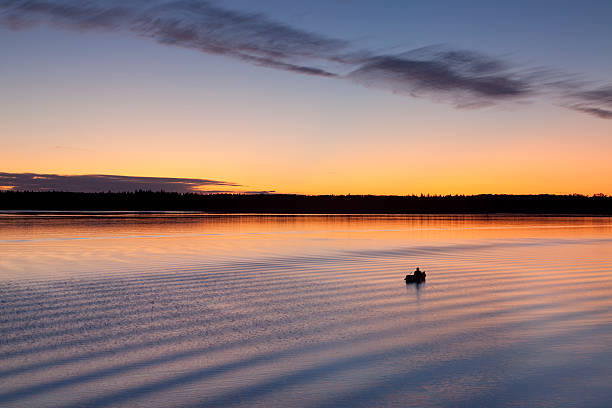Top 30 Oldest Universities in the USA
The story of higher education in America is deeply intertwined with the history of the country itself, rooted in the colonial era and shaped by religious motivations, Enlightenment ideals, and the growing need for intellectual leadership in a new and expanding society. The oldest universities in the United States are not just institutions of learning; they are bastions of tradition, cultural evolution, and academic excellence.

These 30 universities, founded between the 17th and 18th centuries, reflect a timeline of intellectual and institutional development that helped shape the American academic landscape.
Harvard University, established in 1636 in Cambridge, Massachusetts, holds the distinction of being the oldest institution of higher learning in the United States. Founded by vote of the Great and General Court of the Massachusetts Bay Colony, it was named after its first benefactor, John Harvard, a young minister who bequeathed his library and half his estate to the new college. Initially created to train Puritan clergy, Harvard quickly grew into a broader academic institution, inspired by the European model of a liberal arts education. Over the centuries, it has transformed into a world-renowned university with a comprehensive system of colleges, professional schools, and research institutions. Harvard's legacy includes a significant role in American history, from producing influential alumni—such as eight U.S. presidents—to contributing to groundbreaking scientific and philosophical ideas.
Yale University followed in 1701, founded in Killingworth, Connecticut (now Clinton), before moving to its permanent home in New Haven. Originally known as the Collegiate School, Yale was established by Congregationalist clergy seeking to maintain a tradition of European classical education in the New World. The school was renamed in honor of Elihu Yale, a wealthy merchant and benefactor who made generous donations, including books and goods. Yale was deeply rooted in religious education but, like Harvard, evolved into a major liberal arts institution with global prestige. Throughout its history, Yale has been instrumental in shaping American intellectual and cultural life, fostering the arts, sciences, and political thought through its rigorous curriculum and research.
The University of Pennsylvania, founded in 1740 in Philadelphia, stands out for its secular orientation from the outset, shaped by the Enlightenment ideals of its founder, Benjamin Franklin. Franklin envisioned a school that emphasized practical education in addition to classical studies—an approach that marked a departure from the strictly religious instruction of other early universities. Initially conceived as a charity school and later merging with a church-sponsored academy, Penn evolved into a full-fledged university that placed importance on commerce, public service, and the sciences. It was also the first American institution to adopt the name “university,” and among the first to establish medical and business schools, setting a precedent for professional education in the country.
Moravian University, established in 1742 in Bethlehem, Pennsylvania, holds the honor of being the sixth-oldest college in the United States and the oldest in Pennsylvania by charter date. It began as the Bethlehem Female Seminary, founded by the Moravian Church to educate young women—making it one of the earliest institutions in the world to offer education to women. It later evolved into a coeducational institution that merged with the men’s Moravian College and Theological Seminary. Moravian’s identity is deeply rooted in the values of the Moravian tradition: inclusive, community-centered, and committed to the liberal arts. Although smaller than other universities on the list, its early commitment to education for both genders and its deep historical roots grant it a special place in the annals of American higher education.
The University of Delaware traces its beginnings to 1743, when Francis Alison, a Presbyterian minister, opened a small school in New London, Pennsylvania. The school, known as the "Free School," eventually evolved into the Academy of Newark and then into a chartered institution known as Newark College, before taking on its current name. While the university itself recognizes 1833 as its formal charter date, its origins go back to the colonial school that prepared many future leaders, including three signers of the Declaration of Independence. Over the years, it has developed into a prominent research university, known for strengths in engineering, business, and the chemical sciences, reflecting the evolving priorities of American higher education in a more industrial and global context.
Princeton University, founded in 1746 as the College of New Jersey, was established in Elizabeth before moving to Newark and eventually to Princeton in 1756. The university was founded by New Light Presbyterians during the Great Awakening, a period of religious revival in colonial America. Princeton emphasized the training of ministers but also offered a broad curriculum in classical languages, philosophy, and the sciences. Over time, it emerged as a secular and prestigious university with a strong undergraduate focus and deep commitments to research and public service. Princeton’s influence has been widespread, from producing U.S. presidents like James Madison and Woodrow Wilson to becoming a hub for cutting-edge scientific and mathematical research in the 20th and 21st centuries.
Washington and Lee University, founded in 1749 as Augusta Academy and later renamed Liberty Hall Academy, is located in Lexington, Virginia. It was ultimately renamed in honor of George Washington, who gave the institution a significant financial endowment, and Robert E. Lee, who served as its president after the Civil War. The university has a rich history tied to Southern education, aristocratic values, and the transformation of regional institutions in post-Revolution and post-Civil War America. Today, it maintains a commitment to a classical liberal arts education and a strong sense of honor and ethical leadership, as symbolized by its unique student-administered honor system. Its history reflects the broader narrative of American transformation through periods of conflict, reform, and reconciliation.
Columbia University, founded in 1754 as King’s College by royal charter of King George II of England, was the first institution of higher learning in New York. It was established with the support of the Anglican Church and was designed to provide an elite education to the colony’s upper class. Following the American Revolution, the university was rechartered as Columbia College in 1784, marking its commitment to the new Republic. Columbia played a crucial role in American academic and cultural life, evolving into a major research institution and a founding member of the Ivy League. Its campus in Manhattan has become an intellectual and cultural hub, contributing to nearly every field of scholarship, from journalism and literature to law, medicine, and political science.
Brown University, founded in 1764 in Warren, Rhode Island (later moved to Providence), was established by Baptist leaders to provide an education free from sectarian control. It was the first college in America to accept students regardless of religious affiliation, a revolutionary idea at the time. Named after benefactor Nicholas Brown Jr., Brown quickly established a tradition of academic freedom and progressive thought. Its modern Open Curriculum, introduced in the 1960s, exemplifies this ethos by allowing students to design their own educational paths without rigid course requirements. Brown’s role in higher education has been marked by its support for individualism, intellectual exploration, and a liberal arts tradition that continues to attract students from around the globe.
Rutgers University, chartered in 1766 as Queen's College in New Brunswick, New Jersey, was affiliated with the Dutch Reformed Church. It was founded to train future ministers and lay leaders in the colony of New Jersey and named in honor of Queen Charlotte of Mecklenburg-Strelitz. After years of financial struggles and multiple closures, the college was renamed Rutgers College in 1825 to honor Colonel Henry Rutgers, a Revolutionary War hero and benefactor. Over time, it transitioned into a state university, and in the 20th century, it became The State University of New Jersey. Rutgers now stands as a major public research university with a wide array of programs, serving tens of thousands of students and engaging in global academic initiatives.
Transylvania University, established in 1780 in Lexington, Kentucky, holds the distinction of being the oldest university west of the Allegheny Mountains. Its very name, which means "across the woods" in Latin, reflects the frontier spirit of the time. Founded during the American Revolutionary War, Transylvania University quickly rose to prominence as a beacon of education in the western territories. It played a critical role in shaping Kentucky’s leadership, with numerous governors, senators, and even U.S. vice presidents emerging from its alumni. Originally affiliated with the Presbyterian Church, the university developed a reputation for liberal arts and medical education, particularly through its medical department in the 19th century, which was one of the most respected in the country. Although it eventually focused more heavily on undergraduate liberal arts education, its legacy as a pioneer in frontier education remains firmly intact.
The University of Georgia, chartered in 1785, proudly claims the title of the first state-chartered university in the United States. Located in Athens, Georgia, its founding was a result of the vision of Abraham Baldwin, who believed that education was essential to the success of the new republic. Though classes did not begin until 1801, the institution's early charter signified a revolutionary step towards publicly funded higher education. The university played a vital role in the intellectual and political life of Georgia and the broader South. Its development mirrored the evolution of American higher education, from a classical curriculum to modern research and professional studies. Today, the University of Georgia is a flagship public research university, known for its programs in law, business, journalism, and environmental sciences, as well as its contributions to agricultural research and public service.
Vermont State University Castleton, originally founded in 1787 as the Rutland County Grammar School and later evolving into Castleton University before joining the Vermont State University system, represents one of the oldest post-secondary institutions in Vermont. Located in Castleton, Vermont, it began as a preparatory school but gradually expanded into a college and later a university. Its transformation reflects the broader democratization of education in New England, a region long known for its emphasis on learning and civic responsibility. Castleton has traditionally emphasized teacher education and community engagement, serving as a model for rural higher education institutions. Today, under the umbrella of Vermont State University, it continues to uphold its tradition of personalized learning and service-oriented academics.
The University of Pittsburgh, established in 1787, traces its roots to the Pittsburgh Academy, founded in a log cabin on the edge of the American frontier. Located in what was then a small but growing settlement at the confluence of the Allegheny and Monongahela rivers, the institution symbolized the importance of knowledge in a region rapidly expanding westward. It eventually evolved into the Western University of Pennsylvania before adopting its current name. The university’s role in the industrial growth of Pittsburgh was significant, particularly through its emphasis on engineering, medicine, and applied sciences. It is now a major public research university with a global reputation, home to the world-renowned University of Pittsburgh Medical Center (UPMC), and notable for breakthroughs such as Jonas Salk’s development of the first effective polio vaccine.
Georgetown University, founded two years later, came into being in 1789 under the guidance of John Carroll, the first Catholic bishop in the United States. Located in Washington, D.C., it is the nation’s oldest Catholic and Jesuit university. Its founding marked a critical moment in American religious and educational history, demonstrating that institutions grounded in religious tradition could thrive in the secular republic. Georgetown quickly established itself as a center for classical learning and theological scholarship. Over time, it expanded into law, foreign service, medicine, and business. The School of Foreign Service, founded in 1919, is among the most prestigious of its kind, and Georgetown remains a prominent institution for international relations, diplomacy, public policy, and legal education. Its location in the nation’s capital has always made it a magnet for future political leaders, diplomats, and scholars.
The University of North Carolina at Chapel Hill, established in 1789, is widely regarded as the first public university in the United States to hold classes and graduate students. Although its charter came shortly after Georgia's, UNC-Chapel Hill was the first to operate as a state-supported institution. Its foundation emerged from the ideal that education should be available to all citizens, an enlightened philosophy rooted in the American democratic experiment. Located in the small town of Chapel Hill, it grew into one of the flagship institutions of the South. Today, UNC-Chapel Hill is a leading public research university, especially known for its programs in public health, journalism, business, and the humanities. The campus is also home to the Morehead Planetarium, which famously trained NASA astronauts during the early space missions. Its commitment to academic excellence and public service continues to define its character.
The University of Vermont, founded in 1791, was chartered shortly after Vermont became the 14th state in the Union. Located in Burlington, this institution was ahead of its time in many respects. It was among the first American universities to admit students regardless of religious affiliation and later became one of the earliest to admit women and African American students. The university was established by Ira Allen, brother of Revolutionary War hero Ethan Allen, who envisioned it as a key player in the new state's intellectual and moral development. The university has long emphasized a blend of liberal arts and scientific inquiry, and in more recent decades, it has become known for its environmental studies, agriculture, medicine, and sustainability programs. The University of Vermont Medical Center is an important part of the state’s healthcare infrastructure, and the university’s strong sense of civic mission aligns with Vermont’s progressive ethos.
The University of Tennessee, founded in 1794 as Blount College, is among the oldest public universities in the United States. Located in Knoxville, Tennessee, it began with a classically-oriented curriculum, serving a small student body in a frontier setting. Its transformation into a comprehensive public university followed Tennessee’s admission to the Union in 1796. Over time, the university expanded with campuses across the state and developed strengths in agricultural research, engineering, law, and business. The Institute of Agriculture and the Space Institute are particularly prominent, reflecting the university’s alignment with both local economic needs and national scientific endeavors. Athletics, especially the Volunteers football team, has also been a major part of the university’s identity and influence.
The University of Louisville, established in 1798, was originally a private institution before becoming a part of the public university system in Kentucky. Located in Louisville, the largest city in the state, the university initially focused on medical education, law, and public service. One of its earliest components, the Louisville Medical Institute, became highly respected and merged with other schools to form the present university. Today, the University of Louisville is recognized for its research programs, especially in the health sciences, engineering, and business. The university’s contributions to cardiac surgery, organ transplantation, and medical research have been substantial. Its location in a diverse and urban environment has fostered a dynamic campus culture that integrates academics with community engagement and entrepreneurship.
University of South Carolina, chartered in 1801 as South Carolina College, was founded to unify and educate the elite of the post-Revolutionary South. Its establishment was part of a state effort to promote civic virtue and enlightened leadership in a region that had endured political and economic upheaval. Located in Columbia, the state capital, the college eventually expanded into a university, reflecting the changing educational needs of the population. It suffered during the Civil War and Reconstruction but rebounded in the 20th century with a renewed focus on public education. The university today is known for its business school, law school, and programs in public health and international studies. As a flagship institution, it plays a central role in higher education, research, and policy development in South Carolina.
Ohio University, established in 1804, holds the distinction of being the first institution of higher education in the Northwest Territory. Located in Athens, Ohio, it was chartered by the state legislature just one year after Ohio itself became a state. The initiative stemmed from the ideals of the Ohio Company of Associates, whose leaders—particularly Manasseh Cutler and Rufus Putnam—understood the essential role of education in a developing democratic society. The university opened its doors to students in 1809 and quickly became a symbol of learning in the American frontier. Ohio University grew steadily, with its main campus developing an idyllic and historic aesthetic. Today, it offers a comprehensive array of programs from liberal arts to engineering, medicine, and business. It remains an influential public research university deeply rooted in civic responsibility and regional development.
Miami University, founded in 1809 in Oxford, Ohio, was named after the Miami River Valley and the indigenous Miami tribe. Its foundation was part of a broader movement to expand educational access in the growing territories of the Midwest. Often referred to as a “Public Ivy,” Miami University is acclaimed for combining the breadth of a major research university with the personalized education typically found in smaller liberal arts colleges. Its early curriculum was classical, reflecting the Enlightenment-era belief in the power of reason and the humanities. Over the centuries, Miami University developed robust programs in business, education, and the sciences. It also became known for its commitment to undergraduate teaching excellence, consistently ranked among top universities for this metric. The university's influence extends through its alumni, which include prominent figures in government, education, and industry.
The University of Michigan, which traces its roots to 1817, was initially established in Detroit as the "Catholepistemiad, or University of Michigania," long before Michigan became a state. This unusual original name reflected a grand vision of an institution that would cover all areas of knowledge. It moved to Ann Arbor in 1837, where it began to flourish as a pioneering public university. Throughout the 19th century, Michigan led the way in defining the modern American university model, introducing a more comprehensive and secular curriculum, research-focused faculty, and professional schools. It became a major force in the advancement of medicine, engineering, and law, as well as in the arts and humanities. Its flagship campus in Ann Arbor became synonymous with progressive ideas, political activism, and groundbreaking scholarship. Today, the University of Michigan stands as one of the most respected research universities in the world, known for its interdisciplinary approach and global impact.
Saint Louis University, established in 1818, is the oldest university west of the Mississippi River. Founded by Bishop Louis William Valentine DuBourg and originally staffed by Jesuits, SLU emerged from the French-Catholic tradition that influenced much of Missouri’s early history. Situated in the heart of St. Louis, Missouri, the institution emphasized classical education and religious instruction in its formative years. Its Jesuit identity continues to shape its mission, emphasizing intellectual rigor, service to others, and ethical leadership. SLU was among the first American universities to open a campus abroad, establishing a branch in Madrid, Spain, in 1967. It also developed a highly regarded medical school and health sciences division. With its deep community ties and Catholic heritage, Saint Louis University remains a center of faith-based inquiry and academic excellence.
The University of Notre Dame, founded in 1842 in South Bend, Indiana, is one of the most iconic Catholic institutions in the world. Established by French priest Rev. Edward Sorin of the Congregation of Holy Cross, Notre Dame was built on the belief that Catholic education in America should not only flourish but should also compete with the best secular institutions. From modest beginnings, it grew into a formidable academic and cultural force. The university became widely known for its architectural beauty, religious devotion, and emphasis on liberal arts. Over time, Notre Dame expanded into science, engineering, law, and business, gaining national prominence for both its academics and its Fighting Irish athletic teams. Its alumni network is powerful, and its contributions to Catholic thought, public policy, and global humanitarianism are significant. The university today maintains a careful balance between its religious foundations and academic freedom, producing generations of leaders inspired by both faith and reason.
The University of Wisconsin–Madison, established in 1848, emerged the same year that Wisconsin became a state, embodying the democratic ideals of the land-grant university movement. Located on the shores of Lake Mendota, UW–Madison became a cornerstone of the Wisconsin Idea—a progressive philosophy asserting that education should influence people’s lives beyond the classroom. This mission led to significant research breakthroughs in fields like agriculture, chemistry, political science, and sociology. The university's focus on public service and accessible education contributed to its identity as a powerhouse of public higher learning. During the 20th century, it also became a hub for political activism, particularly during the civil rights era and the Vietnam War. Its extensive libraries, research centers, and vibrant campus culture continue to attract students from across the globe. With world-renowned programs in engineering, public policy, medicine, and the humanities, UW–Madison exemplifies the best of public university education.
The University of Maryland, chartered in 1856, began as the Maryland Agricultural College and was one of the early beneficiaries of the Morrill Land-Grant Acts, which aimed to make higher education accessible to the working class. Located in College Park, it faced financial and institutional challenges in its early years, including a devastating fire in 1912. It recovered and eventually merged with the professional schools of the University of Maryland in Baltimore to become the flagship institution of the state system. As the Cold War intensified, Maryland gained national prominence through its collaboration with federal research agencies, especially in the areas of engineering, computer science, and aerospace. Its close proximity to Washington, D.C., has allowed it to develop strong programs in government, public policy, journalism, and international relations. Today, the university plays a critical role in technological research, innovation, and public engagement.
The University of Washington, founded in 1861, is the oldest public university on the West Coast. Located in Seattle, it was established to serve the educational needs of the growing population in the Washington Territory. Over time, it evolved into one of the nation’s leading research institutions. Its Pacific Rim location has made it a vital hub for international engagement, particularly with Asia. UW became a leader in medical research and technology transfer, playing a central role in the biotech boom in the Puget Sound region. The university’s health sciences and public health programs have global reputations, and its computer science department has partnerships with some of the world’s top tech companies. Known for its sprawling campus, cherry blossoms, and urban integration, the University of Washington blends academic excellence with social consciousness and innovation.
Stanford University, founded in 1885 by Leland and Jane Stanford, was conceived as a memorial to their only child, Leland Stanford Jr., who died of typhoid at the age of 15. From its inception, Stanford University in Palo Alto, California, aimed to provide practical education and promote research that would serve the needs of a rapidly industrializing and modernizing nation. It was unusual at the time for being coeducational and nonsectarian. Under the leadership of its first president, David Starr Jordan, Stanford emphasized liberal arts and later expanded rapidly into science and engineering. Its proximity to Silicon Valley and encouragement of entrepreneurial activity among faculty and students catalyzed the birth of major tech companies, including Hewlett-Packard, Google, and Yahoo. Today, Stanford is regarded as one of the world’s most prestigious institutions, known for innovation, academic freedom, and interdisciplinary research. Its influence in shaping the technological, economic, and cultural trajectory of the 21st century is immeasurable.
American University, founded in 1893, is a private university located in Washington, D.C. It was established by an act of Congress, and its mission is deeply rooted in the values of public service, social responsibility, and global engagement. Known for its strong programs in political science, international relations, law, and public affairs, American University is ideally situated in the nation’s capital, providing students with ample opportunities for internships, research, and involvement in public policy. The university is dedicated to fostering a diverse and inclusive environment, and its commitment to social justice and global understanding continues to be a cornerstone of its academic philosophy.
These 30 institutions, each with unique origins and developmental paths, collectively represent the foundation of American higher education. From religious seminaries to secular liberal arts colleges, from colonial outposts to global research powerhouses, they illustrate the evolution of education in America. They have been shaped by revolution and reform, war and peace, science and tradition. Yet, they continue to thrive by balancing their storied pasts with innovation and adaptability—qualities essential for their continued leadership in a changing world.
Photo from iStock







